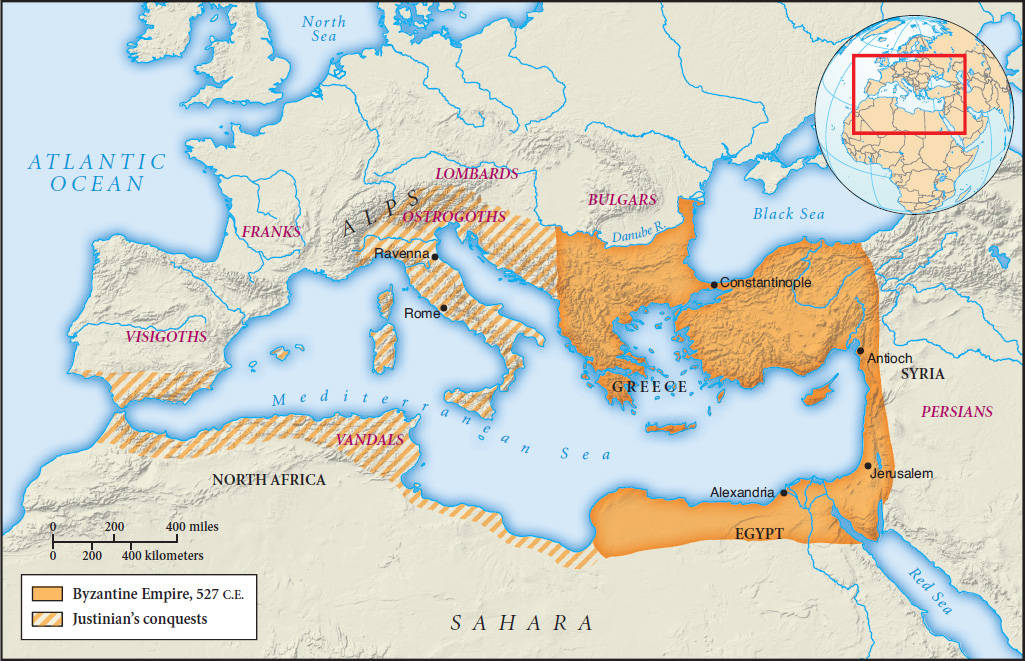The Byzantine State
Perhaps the most obvious change was one of scale, as the Byzantine Empire never approximated the size of its Roman predecessor (see Map 10.1). The western Roman Empire was permanently lost to Byzantium, despite Emperor Justinian’s (r. 527–565) impressive but short-lived attempt to reconquer the Mediterranean basin. The rapid Arab/Islamic expansion in the seventh century resulted in the loss of Syria/Palestine, Egypt, and North Africa. Nonetheless, until roughly 1200, a more compact Byzantine Empire remained a major force in the eastern Mediterranean, controlling Greece, much of the Balkans (southeastern Europe), and Anatolia. A reformed administrative system gave appointed generals civil authority in the empire’s provinces and allowed them to raise armies from the landowning peasants of the region. From that territorial base, the empire’s naval and merchant vessels were active in both the Mediterranean and Black seas.

In its heyday, the Byzantine state was an impressive creation. Political authority remained tightly centralized in Constantinople, where the emperor claimed to govern all creation as God’s worldly representative, styling himself the “peer of the Apostles” and the “sole ruler of the world.” The imperial court tried to imitate the awesome grandeur of what they thought was God’s heavenly court, but in fact it resembled ancient Persian imperial splendor. Aristocrats trained in Greek rhetoric and literature occupied high positions in the administration, participating in court ceremonies that maintained their elite status. Parades of these silk-clad officials added splendor to the imperial court, which also included mechanical lions that roared, birds that sang, and an immense throne that quickly elevated the emperor high above his presumably awestruck visitors. Nonetheless, this centralized state touched only lightly on the lives of most people, as it focused primarily on collecting taxes, maintaining order, and suppressing revolts. “Personal freedom in the provinces was constrained more by neighbors and rival households,” concluded one historian, “than by the imperial government.”7
After 1085, Byzantine territory shrank, owing to incursions by aggressive Western European powers, by Catholic Crusaders, and by Turkic Muslim invaders. The end came in 1453 when the Turkic Ottoman Empire, then known as the “sword of Islam,” finally took Constantinople. One eyewitness to the event wrote a moving lament to his fallen city:
And the entire city was to be seen in the tents of the [Turkish] camp, the city deserted, lying lifeless, naked, soundless, without either form or beauty. O city, head of all cities, center of the four corners of the world, pride of the Romans, civilizer of the barbarians. . . . Where is your beauty, O paradise . . . ? Where are the bodies of the Apostle of my Lord . . . ? Where are the relics of the saints, those of the martyrs? Where are the remains of Constantine the Great and the other emperors? . . . Oh, what a loss!8